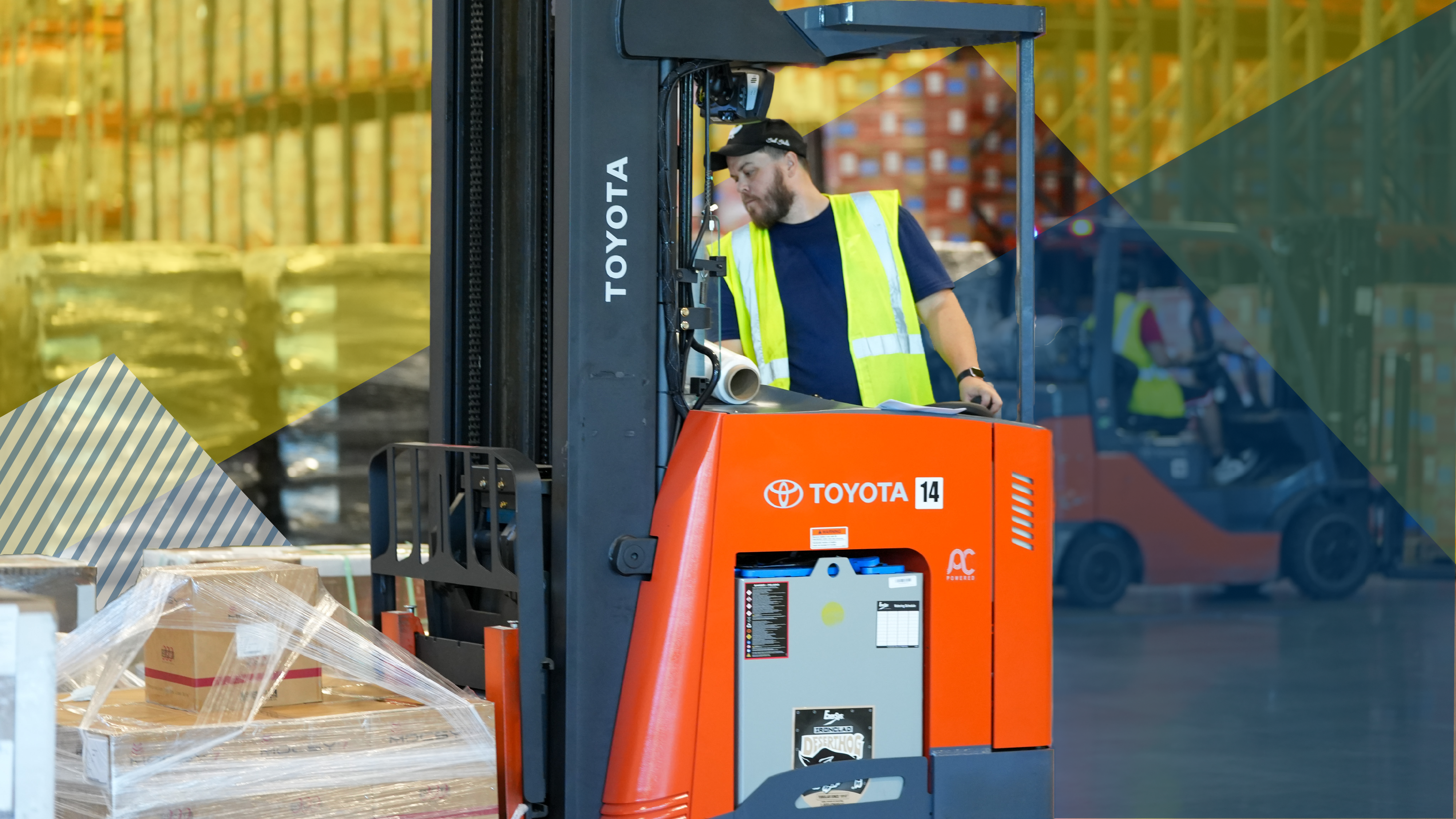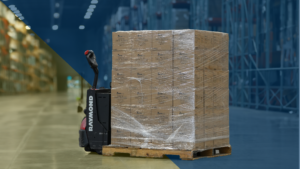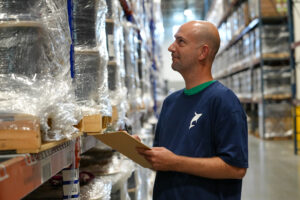Kansas City has long been recognized as a critical logistics hub due to its central location in the United States and its extensive transportation infrastructure. With major interstate highways, rail systems, and an international airport, the city is positioned as a gateway for goods moving across the country. This logistical advantage makes Kansas City an ideal location for cross-docking, a supply chain strategy where products are directly transferred from inbound to outbound trucks with minimal storage. As the demand for faster, more efficient delivery grows, cross-docking has become an essential method for companies looking to streamline their operations, reduce costs, and improve delivery times.
This article explores why cross-docking is particularly vital to Kansas City’s role in the national supply chain. We will delve into the key benefits of cross-docking for industries such as retail, food and beverage, and manufacturing, which rely on rapid, just-in-time delivery models. Additionally, we will highlight the opportunities and challenges of implementing cross-docking in Kansas City, examining the needs of local businesses and the infrastructure that supports this method. By understanding the city’s unique position in national logistics, businesses can better leverage cross-docking to optimize their supply chains and meet customer demands efficiently.
What is Cross-Docking and Why is it Used?
Cross docking is a supply chain strategy that focuses on the direct transfer of goods from inbound shipments to outbound ones with little to no storage in between. Unlike traditional warehousing, where products are stored before being shipped to their final destination, cross docking minimizes or eliminates this step, making the process more efficient and cost-effective. By streamlining the flow of products, cross docking reduces handling time, lowers storage costs, and shortens delivery times, which is especially valuable in industries that prioritize speed and just-in-time (JIT) inventory systems.
Why is Cross-Docking Used?
Cross docking is used to improve efficiency and reduce costs in the supply chain by minimizing the need for storage. By directly transferring products from inbound shipments to outbound trucks with little to no time spent in a warehouse, companies can reduce handling and inventory costs, speed up delivery times, and streamline operations. This is especially critical in industries where time-sensitive goods, such as perishable food items, need to reach their destination quickly to avoid spoilage.
Additionally, cross docking is used to consolidate shipments from multiple suppliers, improving load optimization and reducing the number of deliveries required. This results in reduced transportation costs and more sustainable operations due to fewer trucks on the road. Cross docking also helps businesses respond faster to fluctuating customer demand, making it a valuable strategy in retail, e-commerce, and manufacturing where just-in-time (JIT) delivery is crucial.
Reduced Lead Times: Cross-docking minimizes the time products spend in warehouses, allowing for quicker transfer from suppliers to retailers or customers. This rapid movement helps meet consumer demand more effectively.
Lower Inventory Costs: By reducing the need for large storage spaces and minimizing the amount of inventory held, companies can lower their inventory carrying costs. This is particularly crucial in industries with high turnover rates or perishable goods.
Enhanced Supply Chain Flexibility: Cross-docking allows companies to quickly adapt to changes in demand, seasonal fluctuations, or market conditions. It facilitates a more agile supply chain that can respond rapidly to shifts in consumer preferences.
Improved Transportation Efficiency: By consolidating shipments and optimizing routes, cross-docking can reduce transportation costs and carbon footprints. Efficient use of transport resources leads to a more sustainable supply chain.
Streamlined Operations: The cross-docking process simplifies logistics by reducing the number of handling steps required for products. This streamlining minimizes the chances of damage or errors, enhancing overall operational efficiency.
Better Customer Service: Faster order fulfillment and improved product availability lead to higher customer satisfaction. Companies that utilize cross-docking can provide quicker delivery times, which is increasingly important in today’s e-commerce-driven market.
Facilitation of Just-in-Time (JIT) Systems: Cross-docking supports JIT inventory systems, where goods are received and immediately dispatched to meet production schedules. This is crucial in industries like automotive and electronics, where timing is essential.
Support for E-commerce Growth: The rise of e-commerce has increased the need for efficient logistics solutions. Cross-docking enables online retailers to fulfill orders more quickly, keeping up with customer expectations for fast shipping.
Collaboration and Partnership Opportunities: Cross-docking encourages collaboration between suppliers, manufacturers, and retailers. This partnership fosters better communication, planning, and coordination, leading to a more integrated supply chain.
Disaster Recovery and Resilience: In times of supply chain disruptions (e.g., natural disasters, pandemics), cross-docking allows companies to pivot quickly by redistributing inventory or sourcing from alternative suppliers, thus enhancing overall resilience.
Examples Of Cross-Docking In Action
Retail Sector (Walmart)
Walmart is a prime example of using cross-docking to maintain a highly efficient supply chain. Goods from suppliers are delivered to distribution centers where they are immediately sorted, consolidated, and shipped to stores without being stored for long periods. This minimizes warehousing costs and accelerates product delivery. For Walmart, cross-docking helps ensure that fresh produce, clothing, and other high-turnover items reach stores quickly and efficiently, allowing for faster restocking and lower inventory costs.
E-Commerce (Zappos)
Online shoe retailer Zappos uses cross-docking to handle large volumes of online orders efficiently. As an e-commerce company, Zappos needs to fulfill orders quickly to meet customer expectations for fast shipping. Cross-docking helps Zappos sort items from inbound deliveries and send them directly to outbound trucks that deliver them to customers or regional distribution points. This process speeds up the order fulfillment process, cuts down on shipping costs, and reduces the need for large warehouses.
Pharmaceutical Industry (McKesson)
McKesson, a major pharmaceutical distributor, uses cross-docking to ensure fast and efficient distribution of medications to hospitals, pharmacies, and healthcare providers. In an industry where time-sensitive delivery of life-saving drugs is critical, cross-docking enables McKesson to streamline the supply chain by quickly routing shipments from manufacturers directly to their end destinations. This reduces the storage time for pharmaceutical products, ensuring they reach healthcare providers faster and more efficiently, improving patient care outcomes.
What Are the Types of Cross-Docking?
There are several types of cross-docking, each tailored to different industries and logistical needs. These include:
- Manufacturing Cross-Docking: In this method, raw materials or components are received and immediately moved to a manufacturing facility for production. Instead of storing materials in a warehouse, they are transferred directly to the production line, reducing inventory holding and ensuring just-in-time (JIT) manufacturing. This method is commonly used in industries such as automotive and electronics manufacturing.
- Distributor Cross-Docking: This type involves receiving goods from various suppliers and consolidating them into mixed loads for distribution to customers or retail outlets. For example, a distributor might receive products from multiple manufacturers, combine them into one shipment, and deliver them to a retailer. This reduces transportation costs and improves load optimization. Retailers like Walmart and Target often use this method.
- Retail Cross-Docking: Used primarily by retailers, this method involves transferring products directly from inbound trucks to outbound trucks for delivery to stores. It is especially useful for fast-moving consumer goods or perishable items like food, where reducing handling and storage time is crucial. This ensures that products quickly reach retail shelves and remain fresh.
- Transportation Cross-Docking: This type involves consolidating shipments from multiple suppliers into one truckload to maximize the efficiency of transportation. It is commonly used by third-party logistics providers to optimize truck routes, minimize empty miles, and reduce overall shipping costs.
- Opportunistic Cross-Docking: This approach is used on an as-needed basis. When a company receives an inbound order that matches an outbound order, cross-docking is implemented to directly transfer the goods without storage. This is often driven by inventory and demand fluctuations.
Each type of cross-docking optimizes specific areas of the supply chain, such as reducing costs, speeding up deliveries, or minimizing storage needs.
Why is Kansas City a Prime Location For Cross Docking?
Geographical Advantage
Kansas City’s central location in the U.S. makes it a prime spot for cross-docking operations, allowing easy access to major transportation routes that crisscross the country. Positioned at the intersection of several major interstates, including I-70, I-35, and I-29, Kansas City connects the East and West Coasts, as well as the North and South. This proximity to key markets means goods can be distributed more efficiently, cutting down on transit time and costs. The city’s centrality ensures that businesses can easily reach over 85% of the U.S. population within two days by truck, making it an ideal location for companies requiring fast and reliable distribution networks.
Infrastructure
Kansas City boasts a robust logistics infrastructure, further cementing its position as a hub for cross-docking. Its vast freight network includes direct access to some of North America’s most critical rail lines, including those of Union Pacific, BNSF, and Kansas City Southern, offering businesses access to seamless rail transport options. Additionally, the Kansas City International Airport (MCI) provides critical air freight capabilities for companies that rely on expedited shipping. Combined with the city’s proximity to the inland waterways, Kansas City stands out as a logistics powerhouse capable of handling large volumes of goods across various transportation modes.
Distribution Centers
The region is also home to a growing number of large distribution centers for both national and global companies. Major retailers and manufacturers, including Home Depot and Ford Motor Company, operate significant logistics operations in the area. Kansas City’s proximity to these large facilities means that cross-docking can play a key role in quickly moving goods from suppliers to retail locations, without the need for long-term storage. This has led to the city becoming a central node in national and international supply chains, further solidifying its importance in modern logistics.
What Are The Benefits of Cross-Docking in Kansas City?
Cross-docking in Kansas City offers numerous benefits, helping businesses streamline logistics and optimize supply chain efficiency. Key advantages include:
- Reduced Costs: Cross-docking in Kansas City allows businesses to minimize warehousing expenses by directly transferring goods from inbound to outbound shipments, reducing the need for storage. With Kansas City’s central location, companies can also consolidate shipments, cutting down on transportation costs by optimizing load capacity and minimizing travel distances. The city’s competitive real estate market further lowers operational costs compared to larger logistics hubs.
- Faster Delivery Times: Kansas City’s location at the intersection of major highways and its access to key rail lines and air freight services enable faster deliveries across the U.S. Companies can reach most of the population within two days by truck, improving lead times. By bypassing storage and moving products quickly through cross-docking facilities, businesses can respond faster to customer demand, offering improved service and reduced delivery times.
- Improved Inventory Management: With cross-docking, inventory holding is significantly reduced, leading to better inventory management. Products are not stored for extended periods, which reduces the risk of overstocking or understocking. This method is especially valuable for perishable goods and industries that rely on just-in-time (JIT) delivery, helping companies reduce waste and manage inventory levels more effectively.
- Sustainability: Cross-docking operations in Kansas City contribute to more sustainable logistics practices by reducing the number of trucks on the road and minimizing fuel consumption. Consolidating shipments and optimizing transportation routes result in fewer trips, lower greenhouse gas emissions, and a reduced carbon footprint. Additionally, by minimizing the need for large storage facilities, companies can lower energy consumption associated with heating, cooling, and lighting warehouses.
What Industries Use Cross-Docking And Why?
Cross-docking is used in various industries to streamline the supply chain and improve efficiency. Here are some key industries that utilize cross-docking and the reasons for its adoption:
- Retail: Retailers use cross-docking to quickly move products from suppliers to store shelves, reducing inventory holding costs and improving product availability. It helps in managing seasonal and promotional stock effectively.
- Food and Beverage: Perishable goods require swift handling to maintain freshness. Cross-docking allows for fast turnover of products, minimizing storage time and reducing spoilage.
- Consumer Electronics: With rapid product cycles and high demand, this industry benefits from quick replenishment of stock. Cross-docking helps in reducing lead times and ensuring that the latest products reach retailers quickly.
- Automotive: The automotive industry uses cross-docking to manage just-in-time (JIT) inventory systems, where parts are delivered precisely when needed in the manufacturing process, reducing storage costs and improving production efficiency.
- Pharmaceuticals: Cross-docking helps ensure timely distribution of medications while maintaining compliance with regulations. It reduces the time drugs spend in storage, which is crucial for maintaining efficacy and safety.
- E-commerce: E-commerce companies utilize cross-docking to fulfill orders rapidly. This method allows them to manage inventory efficiently, reduce delivery times, and meet customer expectations for fast shipping.
- Wholesale Distribution: Wholesalers benefit from cross-docking by quickly sorting and distributing products to various retailers, minimizing storage needs and improving delivery speed.
- Construction: Construction projects require timely delivery of materials. Cross-docking helps manage the flow of supplies and equipment to job sites, reducing delays and costs.
- 3PL (Third-Party Logistics) Providers: 3PL companies offer cross-docking services to their clients to enhance supply chain efficiency. It allows them to optimize warehouse space and provide faster delivery services.
What Should a Company That Needs Cross-Docking Services Do?
If your business is considering cross-docking services, here are some steps you should take to consider this logistics strategy effectively:
Assess Needs and Objectives
- Evaluate Supply Chain: Analyze the current supply chain processes to identify areas where cross-docking could add value, such as reducing lead times or minimizing inventory holding costs.
- Define Goals: Set clear objectives for using cross-docking, such as improving delivery speed, reducing storage costs, or enhancing customer service.
Choose the Right Location
- Facility Selection: Identify a suitable cross-docking facility that is strategically located near suppliers and customers to minimize transportation costs and lead times.
- Size and Capacity: Ensure the facility has adequate space and resources to handle the expected volume of incoming and outgoing goods.
Partner with a Reliable 3PL Provider
- Research Providers: Look for third-party logistics (3PL) companies with experience in cross-docking services and a proven track record in your industry.
- Evaluate Capabilities: Assess their technology, infrastructure, and ability to meet your specific needs, including real-time tracking and inventory management.
Implement Technology Solutions
- Warehouse Management Systems (WMS): Invest in a robust WMS to facilitate real-time inventory management, tracking of incoming and outgoing shipments, and efficient routing of products.
- Automated Solutions: Consider automation technologies like conveyor systems or sorting machines to streamline the cross-docking process and improve efficiency.
Streamline Operations
- Process Mapping: Develop clear processes for receiving, sorting, and shipping goods. This includes defining workflows, roles, and responsibilities for staff involved in cross-docking operations.
- Training: Train employees on cross-docking procedures and the use of technology to ensure smooth operations.
Build Strong Relationships with Suppliers and Customers
- Collaboration: Foster collaboration with suppliers to improve coordination on deliveries and shipping schedules. This is crucial for ensuring timely arrivals and minimizing delays.
- Communication: Maintain open lines of communication with customers to manage expectations and provide updates on shipment statuses.
Monitor and Evaluate Performance
- Key Performance Indicators (KPIs): Establish KPIs to measure the effectiveness of cross-docking operations, such as order fulfillment times, inventory turnover rates, and transportation costs.
- Continuous Improvement: Regularly review performance data and gather feedback to identify areas for improvement and optimize the cross-docking process.
Plan for Scalability
- Growth Considerations: Design cross-docking operations with scalability in mind, allowing for adjustments as demand increases or decreases.
- Flexible Solutions: Consider flexible partnerships and agreements with logistics providers that can adapt to changing needs.
Use Nautical For Your Cross-Docking Needs
At Nautical, we offer customized cross-docking solutions tailored to your needs. Our team collaborates closely with yours to create a precise distribution plan for all your products. Contact our team if you are interested in cross-docking out of our Kansas City warehouse.




